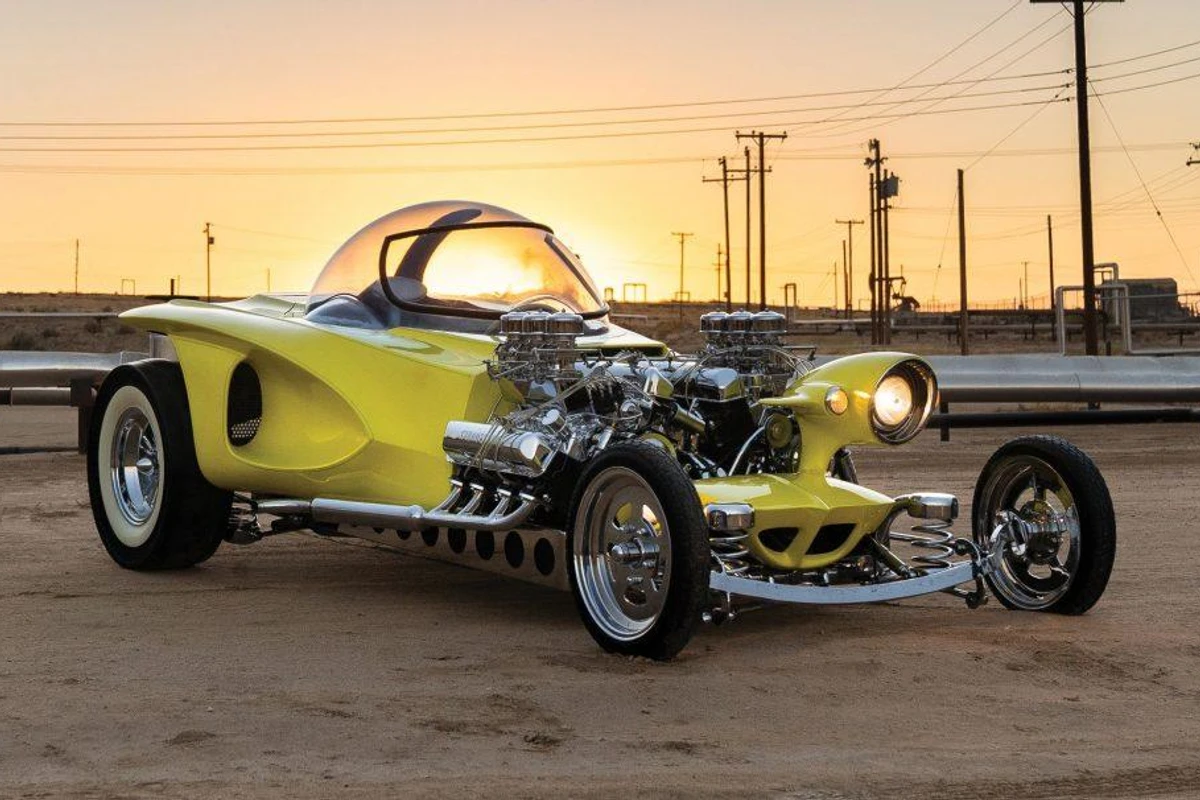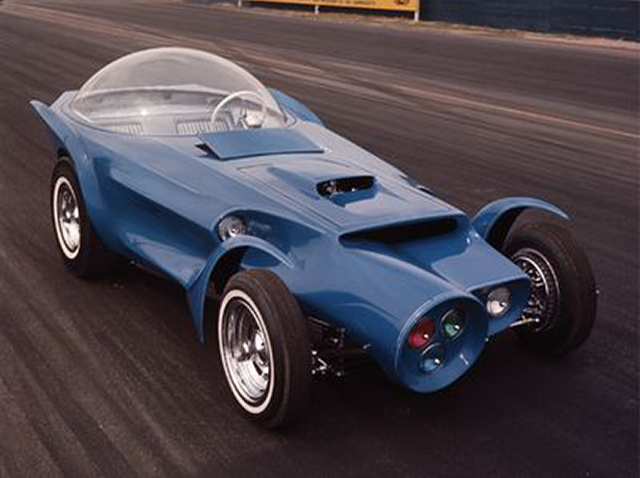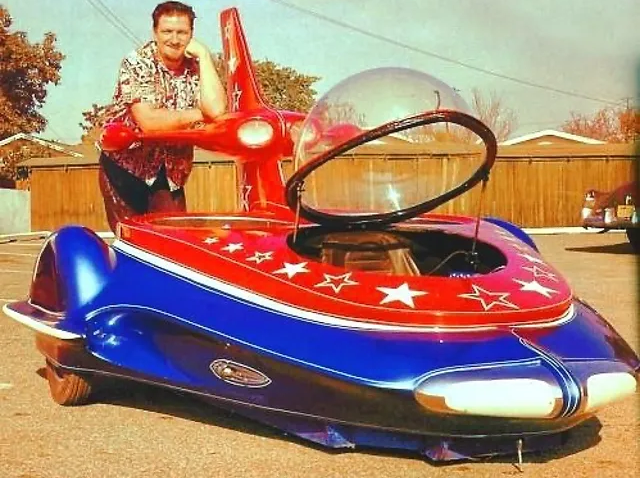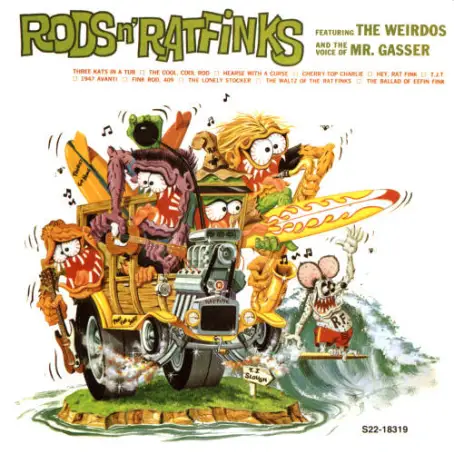History of Ed "Big Daddy" Roth & Rat Fink
- Brandon Olmedo
- May 3, 2023
- 5 min read
If you really like cars you have surely seen Rat Fink, and today we will tell you the history of Ed Roth, the creator of this character and one of the most important icons in Kustom kulture and the hot rod movement.

Ed "Big Daddy" Roth was born in Beverly Hills on March 4, 1932, but grew up in a German-speaking home, so it was at school that he learned to speak English. It is worth mentioning that Ed liked to draw, so apart from doing his homework he drew planes, hot rods and monsters, even while in class.
On the other hand, his father, Henry, was a cabinetmaker, that means he worked with wood, so he decided to provide both him and his brother Gordon with tools and a workshop to keep them out of troubles; this is where Ed learned to make things with wood.

By 1946 he bought his first car, a 1932 Ford Coupe (Ed Roth's biography mentions that it was a 1933 Ford coupe, but the documentary "Tales of Rat Fink" mentions that it´s a 1932), which he rebuilt for completed, and later, in 1949, he graduated from high school to later attend university and study engineering in order to advance his knowledge of automotive design, but he got bored with engineering and physics classes since he considered that they had nothing to do with automobiles, which is why in 1951 he joined the Air Force and attended bombing school in Denver, where he learned to make maps. He was finally honorably discharged in 1955.

By then, Ed already owned several cars, was married and had 5 children, so he began working in the Showroom department of a Sears store and painting cars on the way out of work, but as his family grew, so did the expenses, so by 1958 he began working full-time painting cars with "The Baron" and his grandson Kelly, while at the same time creating cars in his garage using scrap parts and fiberglass, which, at the time, was a newly developed product.

Fact: The first commercial production of fiberglass was in 1936. In 1938, the Owens-Illinois Glass Company and Corning Glass Works merged to form the Owens-Corning Fiberglass Corporation.
The idea to use the fiberglass came from Ed seeing a picture of Henry Ford using a sledgehammer on the trunk lid of a 1941 Ford, which was fiberglass, and in the caption of the photo you could reading that it wouldn't dent, it was here that it occurred to him that he could use it on the bodywork and that it would also be very cheap and didn't require a lot of knowledge to use it.

Here we have to make an interruption. Ed's first entry into car shows was with the "Little Jewel", a 1930 Ford Model A Tudor, which actually had no Ford engine, but an Oldsmobile one and had been painted by Wally Jordan, who offered to paint it for free as long as Ed wasn't looking

But his first fiberglass-built car was the “Outlaw,” which was based on a 1929 Ford Model A frame that fitted a 1925 Ford Model T crossmember, plus an engine from a 1950 Cadillac.

Initially he was going to use wood to make the base of the car, just as W. R. Shadoff would have done with his Boneville streamliner called “Shadoff Special”, but he realized that plaster was better and cheaper than wood. This way he made the shape with the plaster, smoothed it out with sandpaper, and when the car had the shape that Ed wanted, a layer of fiberglass was applied; finally, when the fiber hardened, they proceeded to remove the plaster with the help of rubber hammers, and finally more sanding was done to make them ready for painting.
For all this, "Outlaw" was the car that showed the world that anyone could design and build a car without being a certified automotive engineer, and that all it took was imagination, engine knowledge and common sense. Later, other of his creations saw the light of day, such as "Beatnik Bandit", "Mysterion", "The orbitron", "Road agent" and "Rotar".
In addition, it´s important to emphasize that Ed didn´t create his cars alone, he did it with the help of Doug Kinney, known as "Dirty Doug", and that Ed painted most of his cars until before 1959, but later it was Larry Watson who painted them because Ed considered that if he did not keep abreast of the latest techniques, the results might not be what he expected.

It is also worth mentioning that all his inventions were financed by selling drawings and t-shirts at resistance events, fairs and car shows; in which, as a child, he drew cars and caricatures of monsters that he created, but when he mixed both elements creating T-shirts with the designs of monsters driving the cars, people went crazy and lined up at his booth.
The most popular monster was Rat Fink, which started as a drawing he had put on his fridge and emerged as an anti-hero to Mickey Mouse because Ed had a dislike for Mickey, and it inspired him to draw Rat Fink, and was this character who brought him to fame, so much so that by 1963, teenagers all over the United States were buying Rat Fink t-shirts; In addition, Revell American, a scale model company, began producing model kits of Ed's cars, such as "Beatnik Bandit" and "Road Agent", as well as other "Rat Fink and the gang" kits, and during this year Revell paid Ed a one-cent royalty for each model sold, and at the end of 1963 he earned $32,000 in royalties.
It is worth mentioning that the gang included characters like Drag Nut, Mother's Worry Mr. Gasser, and obviously, Rat Fink.

On the other hand, due to the demand for work, Ed decided to move his operations to a new store in Maywood, California, where he hired several employees to help him build and produce more cars and custom T-shirts.

In addition to all this, several Ed Roth record albums were also produced, which were about a band called “Mr. Gasser and the Weirdos”, and among the albums are: Surfink!, Rods n´ Rat Finks and Hot Rod hootenanny. Additionally, the songs featured on these records tell descriptive stories about the gang and their favorite pastimes, like hot rodding and surfing, giving the message that being different or weird was okay.
In addition, a number of artists have been associated with Roth, including David Mann; RK Sloane, who illustrated the Rat Fink Comix; Steve Fiorilla, who illustrated some of Ed's catalogues; Ed Newton, who worked for Roth and designed several of his cars and T-shirts beginning in 1964 and Kustom Kulture icon Robert Williams, who began working for Roth in late 1965.

By 1967 Ed invented the first genre of custom motorcycle magazines with Choppers magazine, in which David Mann's first paintings could be found. And this magazine was in force until 1970, but it was not until 2018 when Cary Brobeck, former editor of WRENCH Magazine decided the world needed Choppers to return, so he sought the approval of one of Ed's sons, and continues to show off the best custom creations today.

Going back to the 60's, in 1968 Mattel presented Hot Wheels with the series known as "The original 16" or "sweet sixteen", which, as its name indicates, consisted of 16 scale cars, and the "Beatnik Ed's Bandit” was one of these first 16 cars produced by this company.

Furthermore, in December 1977, Robert and Suzanne Williams, along with Skip Barrett, organized the first Rat Fink gathering to celebrate the Roth legacy, which are still held at the site of Roth's final residence in Manti, Utah and near Los Angeles
Another interesting fact is that some punk and alternative bands have used Ed Roth images on LPs and CDs, such as: The Birthday Party with the Junk Yard version in 1981.

And in case you're wondering, the nickname "Big Daddy" was given to him by a corporate publicist since Ed was 6'3" and Ed liked it.
Finally Ed passed away on April 4, 2001 due to a heart attack.































Comments